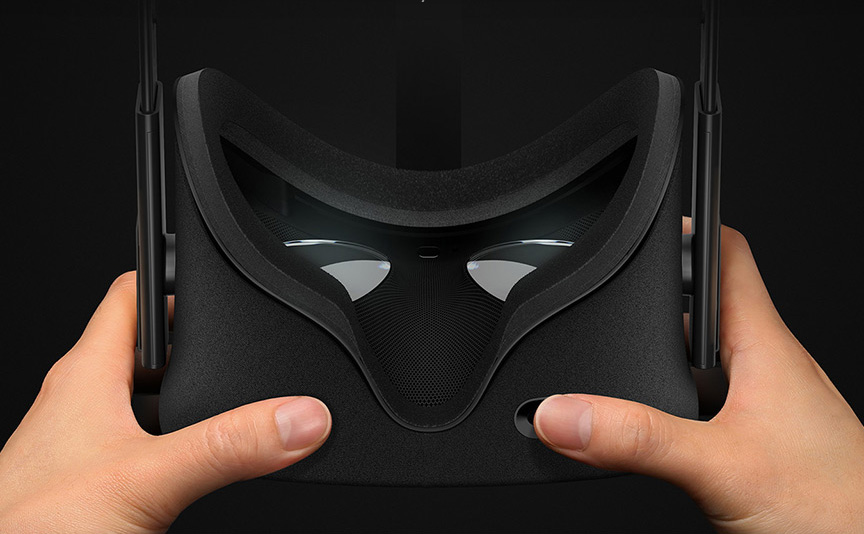How to introduce friends and family to VR
Tips for easing them in and then hooking them with the wow factor of VR.

The trap is set. You've got your family all buttered up with joy, gift cards, and crackers and cheese. They're stuck on the couch, complacent. Nowhere to run: they'll be helpless to resist when you put a controller in their hands and strap them into virutal reality. You will understand the joy of Beat Saber, Uncle Ray, or I’ll take those Farm & Fleet gloves back so help me god.
I’ve spent three years trying to get my elders and cousins to try videogames I think they'll enjoy, from Alien: Isolation to Cities: Skylines. If I’ve learned one thing, it’s that you’ve got to start out slow, and that your uncle will be far more invested in laying down sewage lines than he will about escaping a xenomorph. Okay, that's two things: the point is, it's a process.
I’ve also learned exactly what it takes to ease a bunch of people who’ve barely touched a video game into something totally new, like VR. Aside from the holiday gatherings, I’ve regularly hosted VR parties, and also assisted during a couple Maker faires demoing VR for people as young as 8 and as old as 80. It’s not easy, but it is doable, and I’ll cherish the cries of joy and terror VR can induce for as long as there are people to introduce it to. So if you’re braving the weather to lug one of the best VR headsets to grandma’s, keep these tips in mind for an optimal experience.
Know your audience
The most important part of strapping a VR headset on someone’s head is realizing what you’re getting them into. What feels cool for you may actually be traumatizing for someone else. What makes one person feel a rush of exhilaration may make another feel a rush of bile up their throat. Even if someone says they’re perfectly fine with whatever you’ve got, it’s always best to start out with slow, non-threatening VR experiences.
While demoing the Oculus Rift during a Maker Faire back in 2016, a boisterous 8-year-old boy walked up with his mother, determined to try out a 30 second experience from Oculus Dreamdeck where you’re confronted by a giant T-Rex. To my consternation (and thankfully the mother’s amusement), the young boy physically recoiled when the dinosaur roared in his face, clutching onto his mother’s leg and crying while the headset was still strapped to his face. It’s easy to forget just how "present" VR can feel, as if that monster really is about to reach out and grab you. For adults, it’s even more important to realize they may carry some hardcore trauma with them: PTSD from military service, sexual assault victims, people with very acute fears of heights or certain animals.
Long story short, just be mindful. Your players will appreciate it, and it just makes your job easier.
In a more mechanical sense, you’ll also want to make sure that your VR experience is accessible for players who may or may not have used a video game controller, like, ever. While there’s a lot to be said for the way Oculus Touch and the Vive’s wands feel ergonomic and more natural than an Xbox controller, never underestimate your cousin’s or elder’s ability to completely whiff it.
The biggest gaming news, reviews and hardware deals
Keep up to date with the most important stories and the best deals, as picked by the PC Gamer team.
There are enough "stand here and just look around" VR experiences that you’ll be able to find something for an unfamiliar user.
Here are some good starter experiences for total beginners, before you even get to games:
If they do have a little familiarity, try a few slightly more interactive experiences that can ease them in:

Games vs. "experiences"
We can hem and haw about what makes a VR "game" or "experience," but it all comes down to what kind of gathering you want to have. To make VR more of a fun group activity, get your display up on an easily viewable TV, mirror the audio so everyone can hear what the player is hearing, and get something quick and snappy. Just remember to turn the TV off if you play a VR party game like the fantastic Keep Talking and Nobody Explodes.
If you have a crowd who enjoy horror, Dreadhalls is still far and away one of the easiest VR games to demo. Its 5-10 minute playtime is perfect for switching a headset out frequently, and its randomized nature means no subsequent player will feel too safe.
If you want something a little lighter, you literally cannot go wrong with Beat Saber, the best rhythm game since Guitar Hero. You want something that will not only engage people who aren’t currently playing, but perhaps something that will encourage them to get a little more competitive. Beat Saber’s got a solid party mode, and Fruit Ninja VR sports a leaderboard that’s sure to spark some angry arm flailing.
With a smaller group or lots of time to kill, some of those fancy "experiences" can be an effective way to really soak in the power of VR. It’s less about the calming meditation experiences and more about something that doesn’t put a timer on fun. You can check out our list of the most relaxing VR games and the best non-game VR apps for a lot of options.
Try out something that will give a player not only a visual reason to invest themselves in the experience, but perhaps even a personal reason. As we laid out in our VR apps list, something like Google Earth VR is a fascinating way to let players revisit old homes and haunts. It can be surprisingly emotional. Google’s Tilt Brush is arguably the best VR art tool out there, and is definitely one of those "minutes to learn, lifetime to master" apps. 3D drawings and sculptures can be genuinely stunning.

Proper Care
To put it frankly, VR is the best thing to happen to pink eye since public restroom air dryers. Take it from me, a guy who's demoed the Oculus Rift using his own headset, and had to furiously scrub it clean after every out-of-breath player whipped it off.
Use a fiber cloth to keep that dust away from headset’s lenses. Most importantly, make sure you dry off the edge of your headset. Whatever method works best for you is fine, but there’s nothing grosser than a sweatier-than-usual friend slinging it off and making you feel like you’re putting on swimming goggles when you take your turn. Don’t be afraid to get out the fans.
Let people figure it out for themselves
Unless you’re going for a competitive or cooperative experience (calling your dad a coward in Dreadhalls counts), one of the most important things you can do is simply nothing. Let your family member or friend make mistakes, get messy, be eaten by a Cthulhu beast. If the idea of virtual reality is to lose yourself in a different world, don’t feel like you have to interject every 10 seconds with some advice for a less experienced player. Some players will enjoy keeping one ear open to hear their friends cheer or laugh. That said, there’s nothing more disorienting than pausing the action to figure out what your family member on the couch just yelled. Left? Duck? Oh, he’s just asking if anyone wants his last beer.
It can be so tempting to leap up and grab onto someone to reorient them or fiddle with their gear, but just let them do them. More accurately, let them do what you really hope they’ll do: Lose track of time and space in an amazing experience.
Joseph Knoop is a freelance writer specializing in all things Fortnite at PC Gamer. Master of Creative Codes and Fortnite's weekly missions, Joe's always ready with a scoop on Boba Fett or John Wick or whoever the hell is coming to Fortnite this week. It's with a mix of relief and disappointment that he hasn't yet become a Fortnite skin himself. There's always next season...


